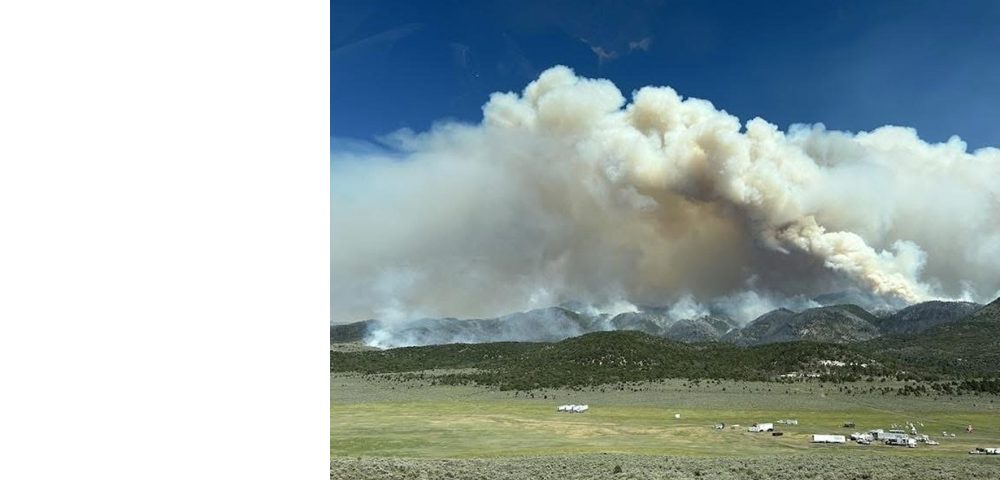
2 Jul 2025
I should try to write something about fires and I will, eventually. One is burning now, the Forsyth Fire, about half an hour south of where I'm typing this, near Kanarraville, Utah. Let's just say the Altadena fire was life-changing, in ways that I'm still processing. My life in Southern California, which I began when I was eighteen, is over—and there's parts to that both good and bad. But now, I'm free from distraction, away from the pulse of the city, on to my next life, and honestly, that feels pretty good. Deep thanks to everyone who has been a help and a comfort during the seismic disruptions on the first half of 2025.
UPDATE, 4 Aug 2025: The Forsyth Fire is out. But the Dragon Bravo fire is raging in the Grand Canyon National Park, and the Monroe Canyon fire remains out of control in central Utah. Pray for rain.
• • •
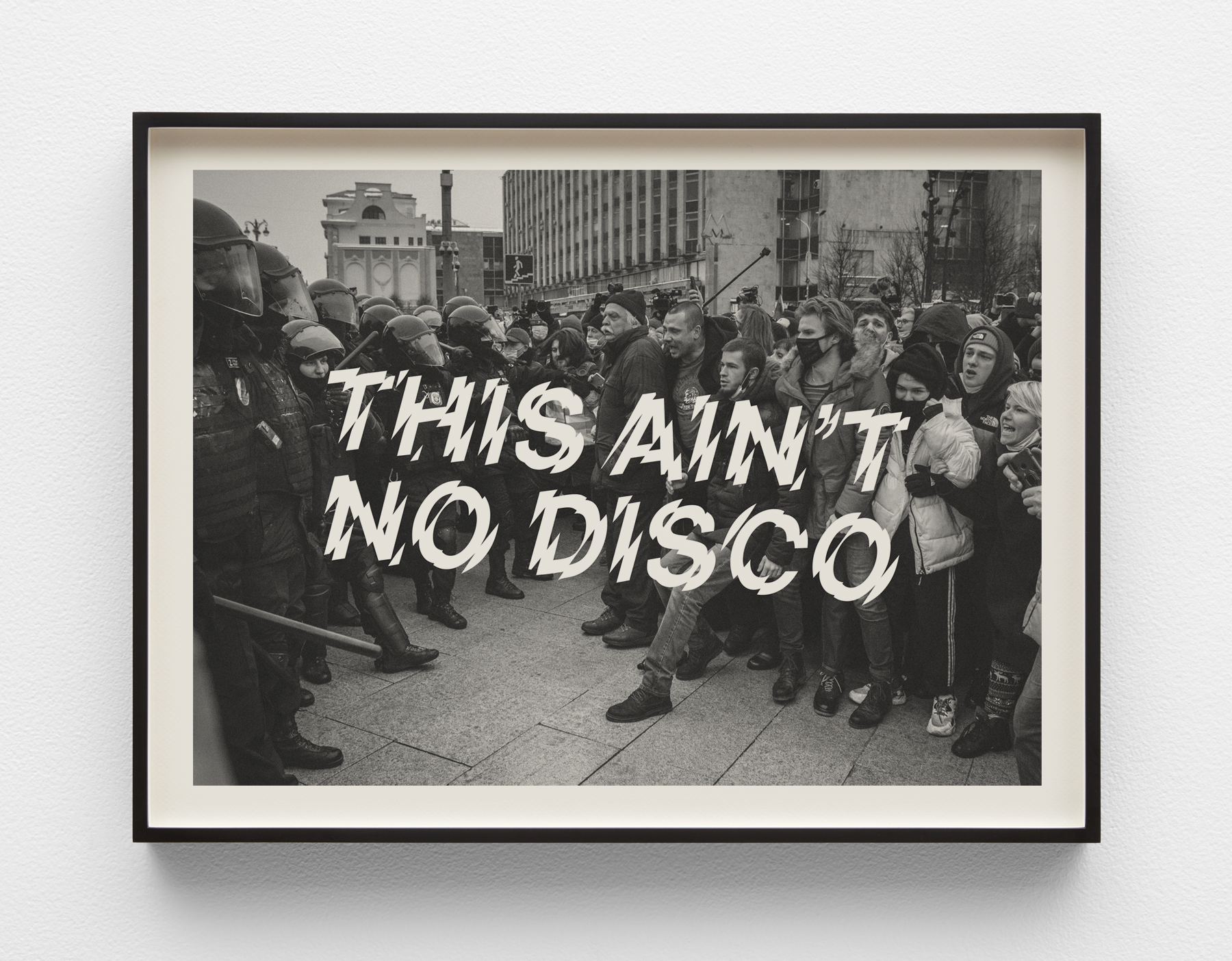
Life During Wartime, 2024. Inkjet on antiqued paper.
21 Sep 2024
#protestwork
#postpunk
#moscow
I've made some new works, which are both simple and complicated. The idea was just to do them without overthinking it. Straight-forward combinations of words and images, the type of thing that I was doing 35 years ago in grad school. I notice the political season seems to make me appreciate the energy of negative emotions: anger, fear, frustration. The one that I'm trying to avoid is resignation. I'm trying to stay positive. Music and movement helps. Hang in there, I tell myself, 45 more days.
I'm also trying to get a newsletter out to the faithful. It will have info about new pieces available exclusively to list members. If you're not already on board you can sign up here. Few mails, no spam, honest.
• • •

UPDATE
14 Jan 2024
Original post
23 May 2023
#copyright
#SCOTUS
#kimgordon
UPDATE: On the eve of the trial, Richard Prince agrees to pay two photographers $650,000!
# # #
Fresh on the heels of the Supreme Court's ruling on Lynn Goldsmith vs. the Andy Warhol Foundation, we have a rematch: photographer Eric McNatt vs 'notorious appropriator' Richard Prince. "Lawyers for Richard Prince have argued, as the Warhol Foundation did, that their client could do this under the fair-use defense and that the artist’s work has been transformative." (quoted from the NY Times article linked below)
The interesting sidebar, legally, seems to be that the Warhol case was really about licensing, and the ruling sidestepped any judgement which might have defined 'transformative' use more usefully. The Goldsmith-Warhol case ended up being decided on an argument that Warhol's altered Prince (the other one) image, when used as a magazine cover, which it was, was essentially competing with Goldsmith's photograph and shared “substantially the same commercial purpose." (quoted from the SCOTUS ruling)
Richard Prince’s case is more unambiguous. He is clearly recontextualizing the image, one where the copyright belongs to the photographer. He has not been granted a license nor has he paid a fee. The ruling in this case will more plainly hinge on a definition of what an artist has a right to do with something made and owned by someone else, without asking for prior permission. Is Prince’s work transformative? Enough? Is it really about the commodification of celebrity culture and the phenomenon of Instagram more than it is about Kim Gordon? Will Meta/Instagram be the next target of a multi-million dollar suit for contributory infringement* as they have effectively made the world’s most popular copying and distribution machine?
As one who also borrows images, and who arguably transforms them, this case is of keen interest.
(Note: the image above is MY redrawing of the evidentiary image addendum from the US District Court for the Southern District of New York, emojis removed—because I don't like them, and because I wanted to author a graphic that appropriates imagery from both McNatt and Prince and the USDC,SDNY).
* The charge that killed Napster.
Read more from the NY Times (paywalled):
After the Warhol Decision, Another Major Copyright Case Looms
• • •

4 November 2023
#22truths
#mybook
Early this year, I starting thinking about writing. I've got a weakness for self-help art books, but they often just miss the mark. I enjoy them quite a bit, but they don't talk much about the problems of actually making art. They're mostly about getting started. Or they're careerist advice and promotional tactics, which is useful, but that assumes you're already making artwork that's worthy of attention. I wanted to read a book that addressed the problems IN the making of work and how one might make work better. Are there right ways and wrong ways to think about some key decisions? I decided there were.
So I started to write these fundamentals down. Truths. The result is a slim, pocket-sized book, called 22 Truths on Art and Art-Making. It's a quick read, but it's not simplistic about the challenges involved in making art and the ways in which artists must be honest with themselves. The first audience is maybe students, but even the most experienced artist has found that a return to basics is sometimes a way forward. I'm confident that there's a line or two in here that makes it worthwhile for every creator, from beginner to seasoned vet.
It's not yet produced in quantity, but it will be soon. It's looking good. You can find out more and order at 22truths.com.
• • •
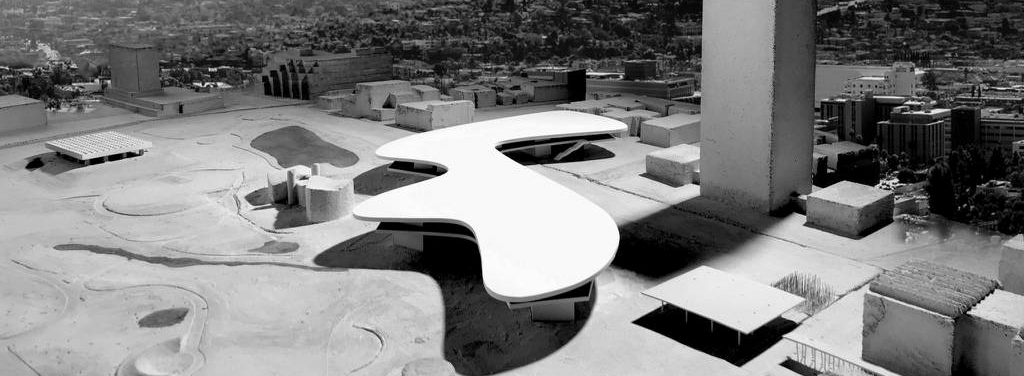
5 Oct 2023
#zumthor
#architecture
#lacma
The New York Times takes a bit of a break from its usual Los Angeles bashing to give us an update on Peter Zumthor's LACMA project, complete with quite a few words from the normally very quiet horse's mouth. Michael Govan chimes in as well, as does Eric Owen Moss and Mimi Zeiger. It's an informative read, even if not accompanied by sexy new renderings.
I despised the old buildings and celebrated their destruction, but like the rest of the city, I'll be unsure about this project until I walk around and inside it. (I thought The Broad looked very interesting while under construction, but I think it's a mostly awful, disjointed art space to visit—so who can say? You have to go.)
I do agree that the objections over the size of gallery space are misplaced. (The new building will have 110,000 sq ft, as opposed to the current 120,000.) Govan adamantly responds to this concern with, “Why is this even a question?” and Zumthor elaborates: “People look at the plan and tend to think, the galleries, that’s the museum, and the rest is circulation. That’s completely wrong. They will see this when they go there, that this doesn’t account for all of the interstitial spaces. It’s a huge museum. We will see. It might be too big for one person in one day, even though it’s only one floor.”
We will see, indeed. I'm eager. Construction is "65%" complete and scheduled to be finished by the end of 2024. Moving in and readying exhibitions might take another year, so the first exhibitions in the new space are pencilled in for early 2026. There should even be a Metro stop by then.
• • •

24 Aug 2023
#kehindewiley
#michelfoucault
#sculpture
I had a chance to visit Kehinde Wiley: An Archaeology of Silence this weekend in San Francisco, in the exhibit's first location, the deYoung Museum. It's a group of works both simple and complex, substantial and monumental—and deeply, deeply sad, while somehow managing to remain both bold and beautiful. Wiley's signature motifs are unsurprisingly present: Black figures posed in a classical manner, painted and cast with a startling attention to detail and realism, with creeping vines and floral patterning. But a minor adjustment to the theme proves to be major: here each figure has fallen and is prone, echoing and quoting traditional works memorializing martyrs, heroes, soldiers and saints. The paintings are of major scale, luminous and painted with a celebration of color despite the wounded subjects. But the sculptures are funereal, massive, grand and full of pathos, their dark bronze weightiness enhanced by their staging in dramatic chapel lighting. They are moving as they move no more. We cannot but mourn.
It's both an easy conceptual hook and a shuddering tragedy that it's so simply pulled off: Black bodies on the ground invariably and loudly resonate with the horror of American violence (both at the hands of authority and not). The bodies have fallen like trash, discarded and broken. The scale of this ongoing despair is overwhelming, and this work envelopes us, weighs us down and buries us. If you have the chance to see it in person, do. Reproductions and catalogs will not do the experience of it justice. Their physical reality is their key.
Following its run in San Francisco (until 15 October), the exhibit will travel to the Museum of Fine Arts in Houston (19 November 2023-19 June 2024); then to the Pérez Art Museum Miami (26 July 2024-12 January 2025), and finally to the Minneapolis Institute of Art (22 February 2025-22 June 2025).
• • •

28 Jul 2023
#wallaceshawn
#andrégregory
#film
I rewatched the incredible My Dinner With André last night—Wallace Shawn and André Gregory's subtle, poignant, funny, collaborative masterpiece. A conversation about art, life, creativity, love and self-realization, almost two hours long, that somehow inexplicably works as a film. (Famed filmmaker Louis Malle was so taken with the concept and script when he read a preview that he immediately wanted to direct it and telephoned Shawn, who thought it was a prank call.) It's a staged improvisation, scripted but spontaneous, real but not, which explores the topic of what art can do while simultaneously doing it. Shawn has repeatedly insisted that while it's based on real events and people, he and Gregory are acting—he said they once toyed with the idea of performing it live and switching roles. It's one of the first meta works that I was mind-blown by, when I saw it as a teenager in 1981. The good news: it holds up—100%. Queue it up.
PS: My Dinner With André is also an interesting middle layer in the film sandwich made of the movie I saw last week, Asteroid City—a fun and funny picture that addresses many of these same themes of art and artifice and the role of the theatrical as a tool of awakening, and the one I'll see next week, Oppenheimer—a serious film and tragedy (that I expect to be) full of questions about the meaning of life and the capabilities of humans to perceive and re-invent their reality.
PS: Oppenheimer sucked. Christopher Nolan, you're off my list.
• • •
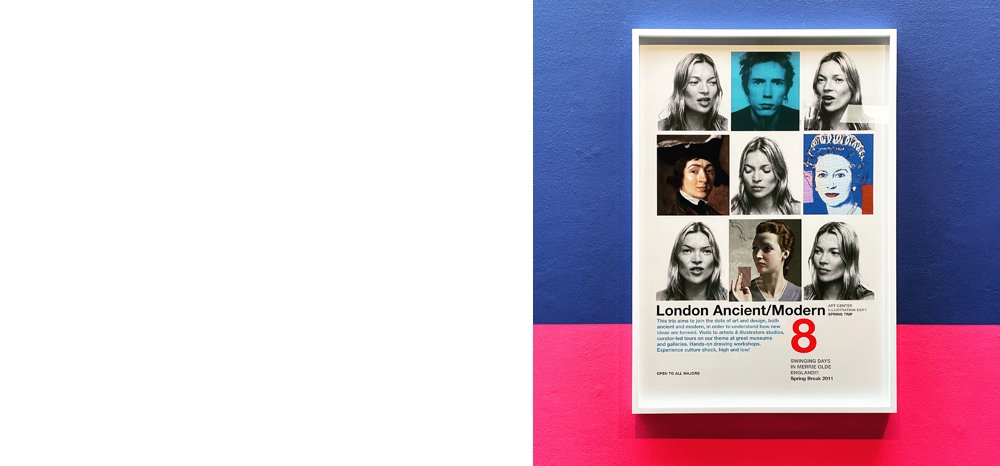
17 Apr 2023
#design
#exhibitions
#artcenter
I almost don't want to spoil the Clive Piercy exhibit with one of its more iconic images, so here's a small, simple piece, consigned to the back hall, doing nothing grand except just being good and smart in a dozen different ways. Clive passed away in 2017, after a long, acclaimed career as a designer, art director, author and educator. Yet Clive returns to inhabit a vibrantly alive space this spring, in a not-quite-a-retrospective at ArtCenter's hillside gallery. In this modest college campus space, Hello, LA: Clive Piercy, Inside the Mind of a Designer delivers both a perspective on Piercy's work and a demonstration of how design functions just as well as art—at being art (and this is no small feat). There's a touch of elegiac mournfulness given the presence of Clive's absence, but this is more than countered by the exuberance and good humor of the work (and the non-work) one discovers on display. The exhibit is meticulously and sensitively installed, as much natural history museum as art gallery, inviting both wandering and wondering. It's surreal, with no trace of artifice. It's funny, emotional, sweet and sad. But the lingering impression is the power of good work done with a clear spirit and a fierce desire to make a thing worth looking at. And what is more artful than that? Drive up the hill and go see this show; the gallery is almost always open.
Through June 24th
Alyce de Roulet Williamson Gallery
ArtCenter College of Design
1700 Lida Street, Pasadena, CA
PS: For more on Clive read Sean Adams' lovely remembrance in Design Observer, from August 2017.
• • •
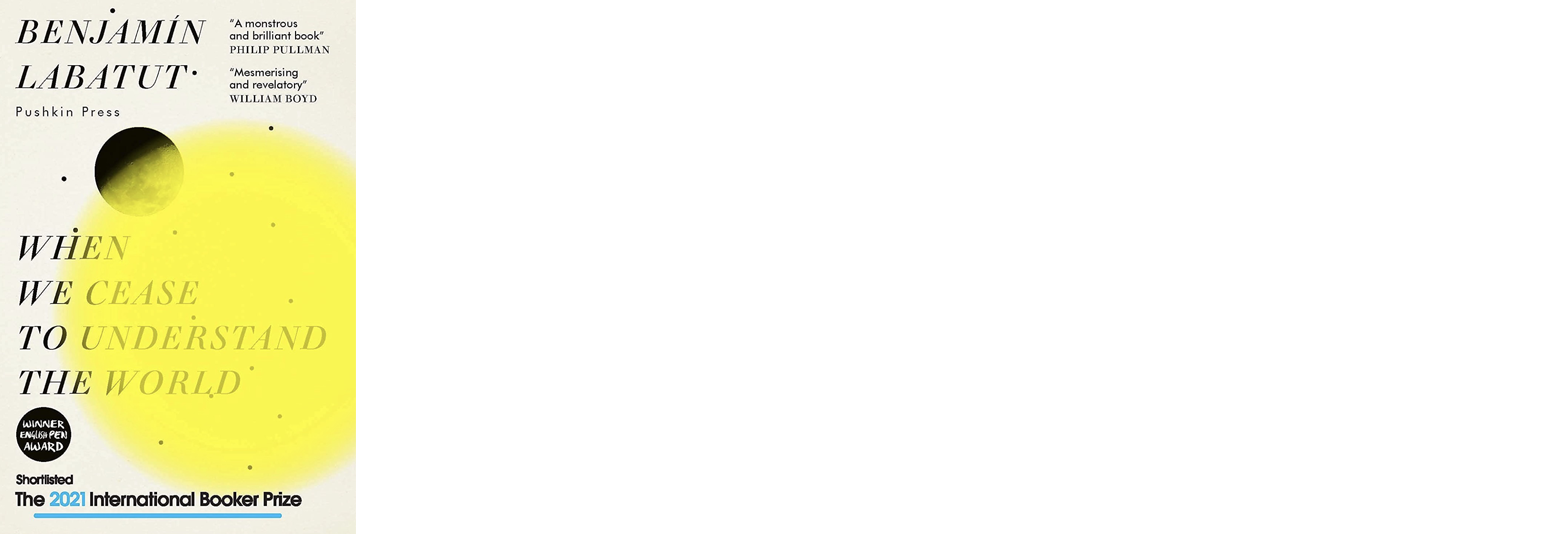
20 Mar 2023
#writing
#books
What a 'monstrous, brilliant,' terrifying, wonderful, beautiful little book. Benjamin Labatut’s When We Cease To Understand The World.
• • •
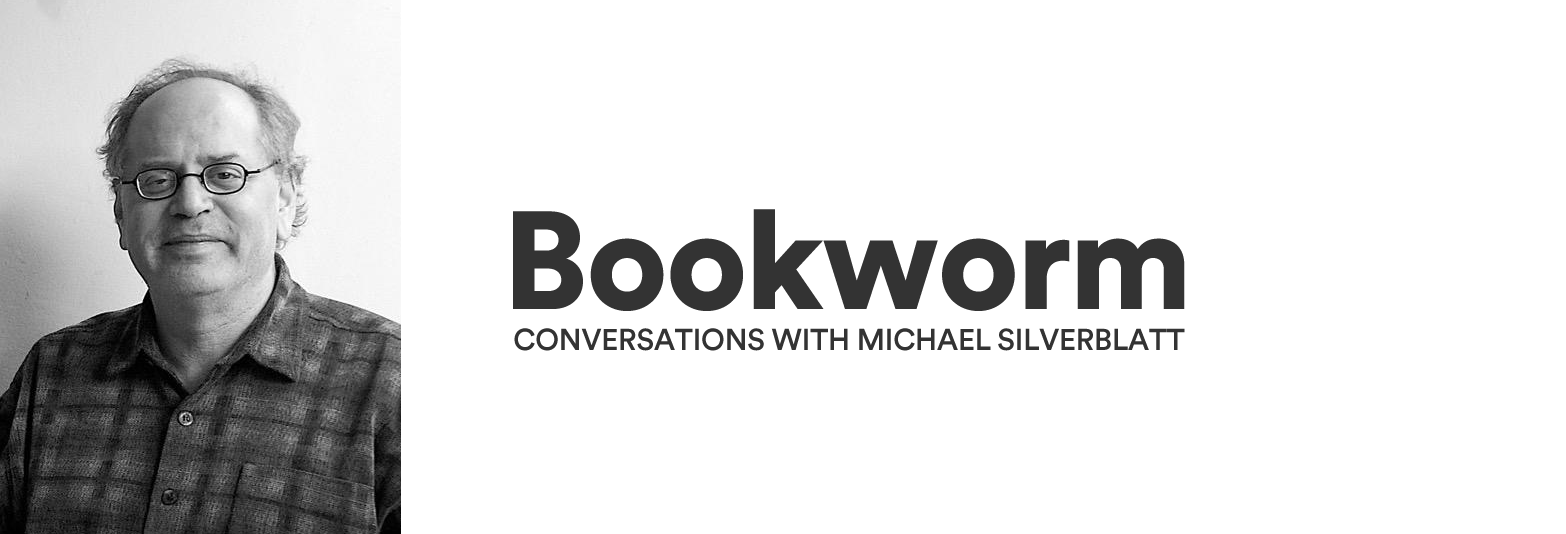
17 Feb 2023
#writing
#books
#radio
Late in 2022, I had the pleasure and challenge of taking on an unusual job: copy-editing—or more precisely, doing a really close reading and making very detailed suggestions re: tweaks to an actual editor, Alan Felsenthal. I stumbled into this assignment after contacting Michael Silverblatt, the creator of the Lannan Foundation/KCRW-FM radio program, Bookworm. Michael’s interviews are deeply personal conversations, and his discussions with renowned authors, essayists and poets are legendary for their breadth, depth and insight. I had asked Michael for permission to transcribe several, with the intention to include them in a very limited artists’ book. Michael surprised me by saying a collection of transcribed Bookworm shows was a big project already in the works, and that he was sure the editors would welcome close readers who were familiar with the shows, and that I should contact the Brooklyn-based publisher, The Song Cave.
Bookworm: Conversations with Michael Silverblatt, is now complete, and due to be published on March 31st. The book gathers interviews with some of the most influential literary luminaries of the last 50 years: John Ashbery, John Berger, Octavia Butler, Joan Didion, Carlos Fuentes, William H. Gass, Toni Morrison, Grace Paley, W.G. Sebald, Susan Sontag, and David Foster Wallace. Gathered together for the first time in print, these conversations reveal not only the quality and character of the writers, but the special relationships that Silverblatt developed with them. The conversations reveal why so many consider Michael to be our greatest reader. He allows us to hear these writers in their own voices, at their most animated, engaged and understood.
• • •

16 Dec 2022
#music
#punkrock
#obit
Here's to defying genre expectations. Jet Black (1938-2022) was a musician "before rock and roll was invented"—and grew up learning violin before becoming a Jazz drummer. But it was in 1974 that he met the mates that would form a dark-hued, proggish, bizarrely successful group named The Guildford Stranglers (later shortened). Their first album in 1977 was an immediate hit, and somehow—no doubt due to attitude and leather jackets—they were considered punk, despite frilly keyboards, complex song arrangements and virtuoso musicianship. In any good rock'n'roll outfit, the drummer drives the train—and in Jet Black, the Stranglers had found a locomotive. This band's discography is so deep, so diverse, and so consistently good that it's truly difficult to summarize adequately. So go listen. The first LP, Rattus Norvegicus, remains stingingly potent. Their biggest, oddest record, The Gospel According to the Meninblack, was "cursed, after we summoned the occult," (according to Black). It was, of course, his favorite. At sundown, I think I'll put on Dreamtime.
• • •
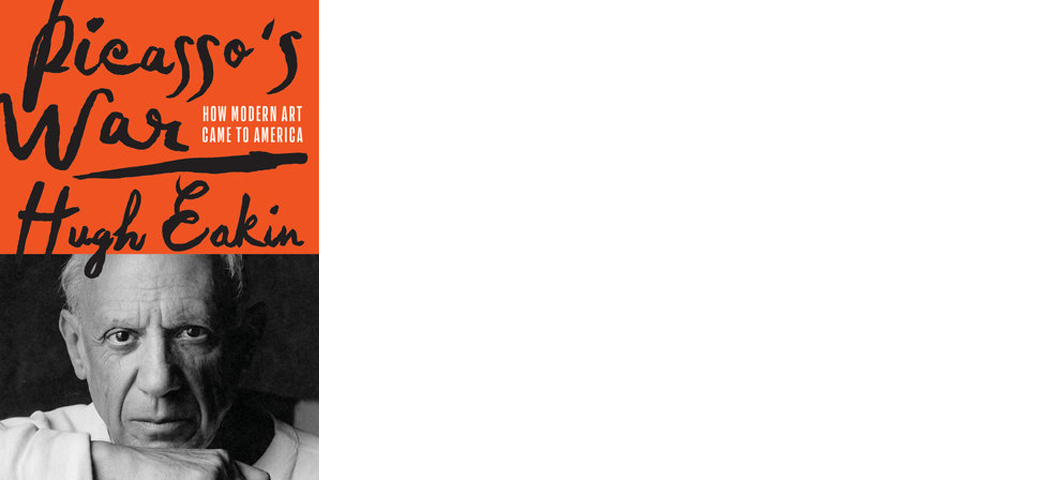
Jacket design by Debbie Glasserman
1 Nov 2022
#books
#arthistory
#picasso
It reads like a novel and feels like a film, but Hugh Eakin's Picasso's War is non-fiction. It is the largely unknown tale of how the earliest modern art aficionados in America passionately fought to evolve parochial tastes and unite a new land, a new century and the new art. A fascinating between-the-wars history of the nascent Met and MoMA institutions, interwoven with a behind the scenes look at the early New York gallery world—with Picasso cast as catalyst, combatant and conquest. A ton of detail that I did not know that I didn't know. And fun. Recommended.
• • •
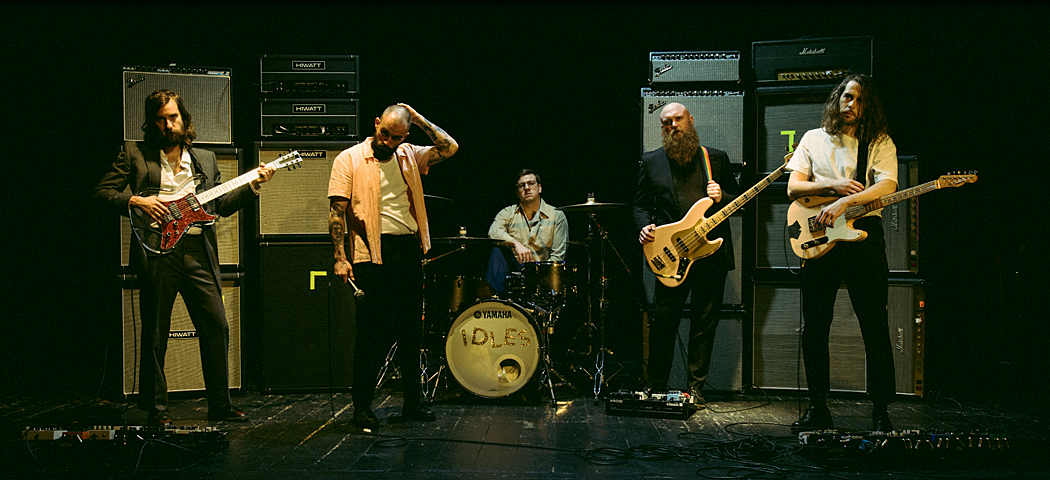
IDLES
29 Oct 2022
#music
#postpunk
I’m lucky that a lifetime around bands and music people means I still discover music the old fashioned way—from a recommendation by a friend. I might be getting on, but I’m still thrilled to find a recording artist that excites me. IDLES aren’t exactly new. They formed in 2009 but (curiously) didn’t release a recording until 2017. I discovered them thanks to long-time collaborator Michael Moroney sharing their NPR Tiny Desk Concert. Then I watched their From The Basement video set and wasn’t even sure that I was watching the same band. Singer Joe Talbot would tell you they are NOT punk rock, but hard music for softies. I can confirm they are bracing, caustic and relentless (says Pop Matters), and authors of songs full of urgency, wit and the shattering of complacency (or so says Uncut). Consider me an old friend passing on an insider tip: check out IDLES and crank it up.
• • •

Peinture 130 x 102 cm, 22 juillet 2020
27 Oct 2022
#painting
#abstraction
#obituary
“Plus les moyens sont limités, plus l’expression est forte.” Thank you, Pierre Soulages, the "master of black," who has now left us, aged 102. Soulages, and his fellow devotee of darkness, Ad Reinhardt, explored 'the end of painting'—working exclusively in shades of black for the last decades of their careers. Soulage's paintings are almost impossible to capture photographically (like all noteworthy painting), so see them in person when you can. They are incredibly varied, visually rich and deeply immersive. Musée Soulages in Rodez, south central France, just might be the place if you happen to be in the neighborhood.
• • •

Cate Blanchett and Nina Hoss in TÁR
21 Oct 2022
#film
#music
Cate Blanchett is "incandescent" as Lydia Tár (says Anthony Lane in The New Yorker), and there's not too much more one can really say about this film without being a spoiler—so go see it. It's tense, it's awful, it's wonderful. AO Scott accurately describes Todd Field's direction as echoing Kubrick and Polanski. Blanchett, her generation's leading actor, transforms herself, bringing to mind her brilliant personifications in Julian Rosenfeldt's amazing multi-channel video installation, Manifesto (2015). As one might guess with a film set in the world of classical concert music, Hildur Gunadóttir's score becomes a character in the film—the cinema audio experience is recommended.
• • •
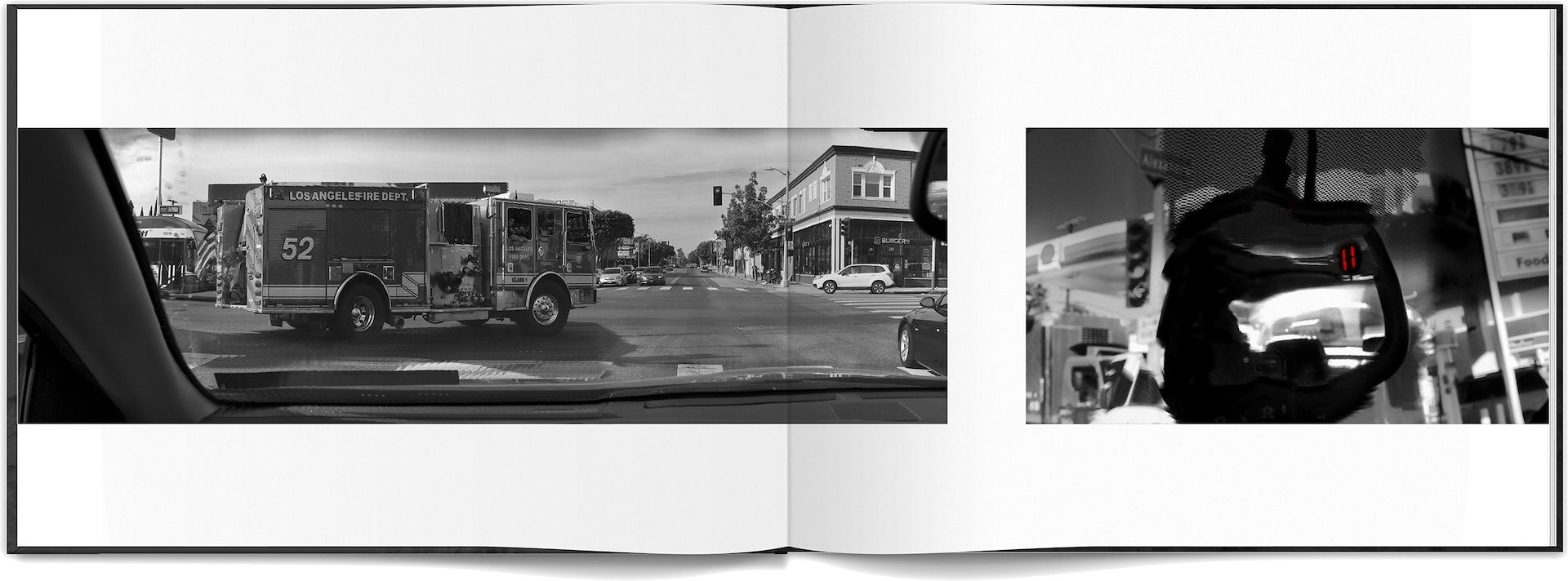
David Sylvian’s ERR, a photographic essay
20 Oct 2022
#books
#photography
#music
David Sylvian is best known as a musician, founder of the seminal 70's band Japan (aka Rain Tree Crow), a frequent collaborator with grandmaster Ryuichi Sakamoto, and a resident on the plane of art-pop that is occupied by rare names like Bowie, Reed, Eno, and Ferry. But Sylvian has always made more than music. ERR is his recent coffee table book, a "photographic essay" shot on a pandemic-era road trip across America. ERR features accompanying texts by Shinya Fujiwara and poetry by Daisy Lafarge. It's published in a limited edition of 500 signed and numbered copies. You can find out more—the artist's notes on his journey and process are a great read—and order it here.
• • •

Art Center, Hillside Campus, Pasadena, CA
12 Oct 2022
#school
#architecture
#artcenter
I was lucky enough to attend Art Center when it was only one campus, without the architectural addition that would come later. Almost every modern architecture buff knows the hillside campus was designed by Craig Ellwood Associates, commissioned by Don Kubly, for whom CEA had earlier completed a mid-70's Pasadena residence.
But the real story of who designed the iconic Mies-inspired masterpiece is more complex. Ellwood never actually designed the Art Center College. Because, in strict terms Craig Ellwood was a fiction, and it was CEA partner Alfred Caldwell who designed and completed the project. As reported in Elle Decor:
"According to records, 'Craig Ellwood' was born on February 2, 1922, in Clarendon, Texas, under the name John Burke. Moving with his mother and brother to California after the death of his father, the young creative completed his studies and began work at a luxury clothing store, where he modeled. In 1947, we find out that Burke had served in the military, that his first wife was an actress, and that in 1947, he married another actress, Gloria Henry. Alongside his brother and two other friends from the war, Burke founded the Craig Ellwood construction company, named after the Lords and Elwood liquor store. It would only last two years, but Burke would keep the name, legally changing his in 1951. Working as a cost estimator for the contracting firm Lamport Cofer Salzman, he helped out on the Case Study Houses. It was there that he would meet the Case Study project director John Entenza and begin an adventure as an uncertified architect, drawing about as much attention for his buildings as for his lifestyle. Ellwood collected Ferraris and Lamborghinis, spent the studio’s money and as the years went on, showed up for work less and less. Exiled and pushed aside by CEA, he was forced to leave the studio in 1977, when he escaped to Italy to become a painter. Years later, when Art Center would require an expansion, Ellwood attempted to claim credit for the structure, but was quickly denied by other members of his former studio."
• • •
-----///**—^^^^^^